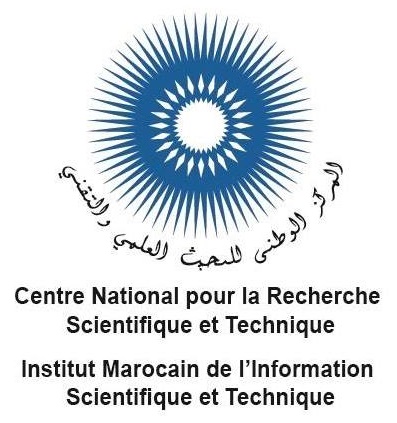Estimation Of Entrance Skin Dose And Effective Dose In Cervical Spine X-Ray Procedures
Keywords:
Diagnostic Reference Level, Cervical Spine, Entrance Skin Dose, Effective DoseAbstract
The use of ionizing radiation in medical field is the largest and a growing man-made source of radiation exposure. The aim of this study is to estimate the doses received by patients during radiological examinations in order to standardize the examination procedures and optimize the patient dose. Two most referral hospitals, located in the Capital City of Kebbi State, were investigated. The Patients undergoing cervical spine X-ray examinations were involved in this study. Entrance Skin Dose (ESD) and Effective Dose were calculated using exposure parameters (voltage, tube loading, focus-patient distance). The Cal Dose _X 5.0 software was used to determine ESD and ED. Conversion coefficients were used to relate ESD to the effective dose (ED). A total of 65 radiographic examinations data were collected from the two hospitals during three months of the year 2021 to 2022. The highest ESD (mGy) was found for the lateral cervical view in Sir Yahaya Memorial Hospital, with an average value of 4.12 mGy. The highest value of ED and DRLs was also observed for the AP projection in FMC with an average of 0.27 mSv and 4.73. The ESDs reported in this study are generally higher than value obtained from the research conducted by the Iran, and Brazil, while ED was remarkably high compared to other studies. This trend is an indication that the patient radiation protection practices in these two hospitals need to be justified. The results of this study showed that there is a need for justification and optimization in order to reduce patient radiation dose without affecting the quality of the radiographic image. The data of this work will be useful in contributing to the formulation of regional guidance levels.
Downloads
References
H. Rahanjam, H. Gharati, M. Kardan, B. Fasae, and A. kbarzadeh, “Estimation of doses for al types of patients in common diagnostic X-ray examinations”. Caspian Journal of Health Research, 2(1), pp. 4-53, 2016
DU. Xiang, “An investigation on patient dose in screen-film diagnostic radiology in Lhasa City, Xizang Autonomous Region, China”. Front. Med, 7(4), 506–509, 2013.
B. Samaila, A. Bello, M. Abbas, and B. Maidammad, “Assessment of Radiation Dose for Adult Patients during Anterior Posterior Pelvic X-ray Examinations”. International Journal of Advances in Engineering and Management (IJAEM), 3(9), pp.1061-1065, 2021a
M. Asadinezhad and M.T. Bahreyni Toosi, “Examinations in Iran: Proposed the first Iranian Diagnostic Reference” Journal of Radiation Protection Dosimetry, 132(4), pp. 409–414, 2008.
M. Gholami, A. Maziar, H.R. Khosravi, F. Ebrahimzadeh, and S. Mayahi, “Diagnostic reference levels (DRLs) for routine X-ray examinations in Lorestan province, Iran”. International Journal of Radiation Research, January, 13(1), pp. 85-90, 2015
O.A. Osibote and A.CP. Azevedo, “Estimation of adult patient doses for common diagnostic X-ray examinations in Rio de Janeiro, Brazil”. Physica Medica, 2(4), pp: 21-28, 2008.
A. Aliyu, M. Mary, D.L. Emmanuel, and I. Garba, “Assessment of Radiation Dose for Patients during X-ray Procedures in University of Maiduguri Teaching Hospital, Nigeria”. J. Rad. Nucl. Appl. 6(2), pp. 163-169, 2021.
M.U. Ali, M. AY. Hotoro, T.S. Bichi, A. Salisu, A. Aliyu, I. Muhammad, “Estimation of Adult Entrance Skin Dose and Effective Dose for Patients Undergoing X-ray Diagnostic Examination at Murtala Muhammad Specialist Hospital Kano State of Nigeria”. IOSR Journal of Applied Physics (IOSR-JAP), 14(2), pp. 01-05, 2022
C.J. Olowookere, R.I. Obed, I.A. Babalola, T.O. Bello, “Patient dosimetry during chest, abdomen, skull and neck radiography in SW Nigeria”. Radiography, 17, pp. 245-249, 2011.
Y.Y. Haval, and A.M. Hariwan, “Assessment of patients X-ray doses at three government hospitals in Duhok city lacking requirements of effective quality control”. Journal of Radiation Research and Applied Sciences, 10, pp. 183-187, 2017.
F.A. Mettlerr, T.Y. Terry, and M. Mahadevappa, “Effective Doses in Radiology and Diagnostic Nuclear Medicine”. Radiologyjournal, 248 (1), pp.100-11, 2008.
P.R. Durga, and T.D. Seife, “Radiation Exposure of Patients Undergoing Common Diagnostic X-Ray Examinations in Some Major Hospitals in Visakhapatnam”. India. Journal of Medical Diagnostic Methods, 1(1), pp. 101-119. 2012.
O. Kofi, W.G. Samuel, A. Emmanuel, A.A. Adriana, and O.D. Emmanuel, “Estimation of adult patient doses for selected X-ray diagnostic examinations”. Journal of Radiation Research and Applied Sciences, 7(1), pp. 459 – 462, 2014.
K.O. Ernest, and D. Johnson, “A Survey of Organ Equivalent and Effective Doses from Diagnostic Radiology Procedures”. ISRN Radiology, pp. 1- 9, 2013.
C.A. Aborisade, “Radiological Implications of Radiation Dose Distribution in Paediatric Patients Undergoing Diagnostic X-Ray Examination in Some Nigerian Teaching Hospitals”. International Journal of Engineering Research & Technology (IJERT), 10(02), pp. 444 – 450, 2021.
D.Z. Joseph, C.N. Christian, S.U. Mohammed, P.O. Ameh, G. Njoku, F.D. Malgwi, A.S. Moi, and S.L. Shem, “Establishment of Local diagnostic Reference Levels for Radiography Examinations in North-Eastern Nigeria”. Science World Journal, 12(4), pp. 78-90, 2017.
Medical Information Research and Information Network [MIRIN], “Diagnostic Reference Levels Based on Latest Surveys in Japan”. Retrieved on 22nd Oct 2020, from http://www.radher.jp /JRIME/report /DRLhoukokusyoEng.pdf. 2015.
Protection Dosimetry [PD] in Slovenia, “Radiation protection Dosimetry” Advance Access publication, 140 (2), pp. 163–165, 2010
Nigeria Nuclear Regulatory Authority “NIGERIAN RADIATION SAFETY IN DIAG NOSTIC AND INTERVENTIONAL RADIOLOGY REGULATIONS”, No. 19, pp.662-692, 2006
B. Samaila, and A. Bello, “Determination of Radiation Doses Received during Knee Joint X-ray Procedures in Kebbi State, Nigeria”, Science Progress and Research, 2 (1), pp.506-510, 2021b.

Downloads
Published
How to Cite
Issue
Section
License
Copyright (c) 2022 BUHARI SAMAILA

This work is licensed under a Creative Commons Attribution 4.0 International License.
Copyright on any article in the International Journal of Engineering and Applied Physics is retained by the author(s) under the Creative Commons license, which permits unrestricted use, distribution, and reproduction provided the original work is properly cited.
License agreement
Authors grant IJEAP a license to publish the article and identify IJEAP as the original publisher.
Authors also grant any third party the right to use, distribute and reproduce the article in any medium, provided the original work is properly cited.














